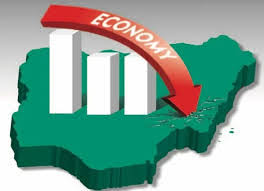The aerospace market is positioned for a significant transformation with smaller, more focused companies expected to emerge from a stark market that might take at least five years to recover, analysts from Deloitte United Kingdom said.
Market metrics have painted a grim short- and medium-term picture for the commercial aerospace market. Global passenger demand has plunged by 70 per cent, 18,000 aircraft have been parked, and deliveries appear likely to finish down by half this year compared with 2019, Deloitte United Kingdom senior manager Matthew Davy said Tuesday during an FIA Connect webinar titled “Transforming to be Competitive in the New Normal.” Aircraft deliveries could take five or more years to recover, he said.
Airline traffic could take up to a decade to fully recover, according to some models, added Jonathan Thomson, Aerospace & Defense leader for Deloitte. To highlight the gravity of that drop, Thomson noted the 5 percent slides following 9/11 and the global financial downturn in 2008 and the fact that traffic had returned after both of those crises within 12 months. “By any metric,” he said, the challenges are significant as companies look to adapt.
The market will face rising levels of competition and lower profits, Davy added. “Coupled with raised levels of volatility and uncertainties around the eventual market structure, size, and dynamics, this will be a challenged sector for some time,” he said. “Designing winning strategies and executing them will be difficult for a number of years.”
Recovery could occur up to two years sooner for narrowbodies than widebodies. “This is because demand for long-distance travel is expected to return at a slower pace than short-distance travel,” Davy said.
He noted the discontinuation of four-engine widebody production and said analysts “do not see a new airframe in our eight-year forecast.” Deloitte further believes that V-shaped recovery is now unlikely. Optimistically, the market could see a U-shaped recovery, but that is contingent on widespread testing and a vaccine by late 2021. Complicating the matter, geopolitical tensions portend “significant consequences to the aerospace market.”
The market has first focused on survival and shoring up liquidity, but now companies are looking to adapt and change to what is becoming the new business normal so they can once again position to grow, Thomson said.
However, without a clear consensus on the challenges and paths to recovery, companies are reacting in different ways, said Tim Archer, senior risk advisory partner for Deloitte United Kingdom. The first action has been to cut costs, and the scale of job losses “could be quite large.” The level of cost reductions might be much greater than seen in the past, Archer said.
In the future, along with reduced workforces, increased efficiencies, higher levels of productivity, and increased flexibility will be necessary. “Change management will need to be taken seriously,” he said, opening the door to new systems such as smart factories, robotics, and other digitization efforts. This will present a “once-in-a-lifetime change that will define the success for the next decade,” he said.
In addition, the companies themselves likely will become smaller, more efficient, and focused while “getting back to basics.”
Duncan Johnston, industrial products and construction leader for Deloitte United Kingdom, agreed, saying the industry could see a period of selloffs of non-core businesses. Some manufacturing done in-house might get sold and necessary components outsourced. In the past, OEMs have taken on component manufacturing where a supplier might be struggling, but Johnston sees that tactic as less likely as companies see less cashflow.
However, he also sees opportunities for some businesses with a stronger financial footing to take on more manufacturing and increase their mergers and acquisitions activity.
But in the short term, aerospace businesses will grapple with supply-chain distress and will need to revaluate pricing once structured around larger production flows. The industry likely will look at outside industries for lessons-learned, such as the automotive business, which has long focused on such issues, he said.



